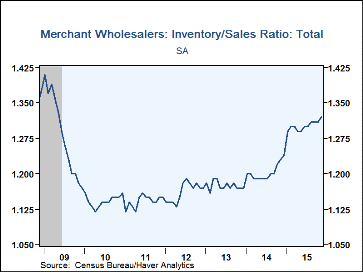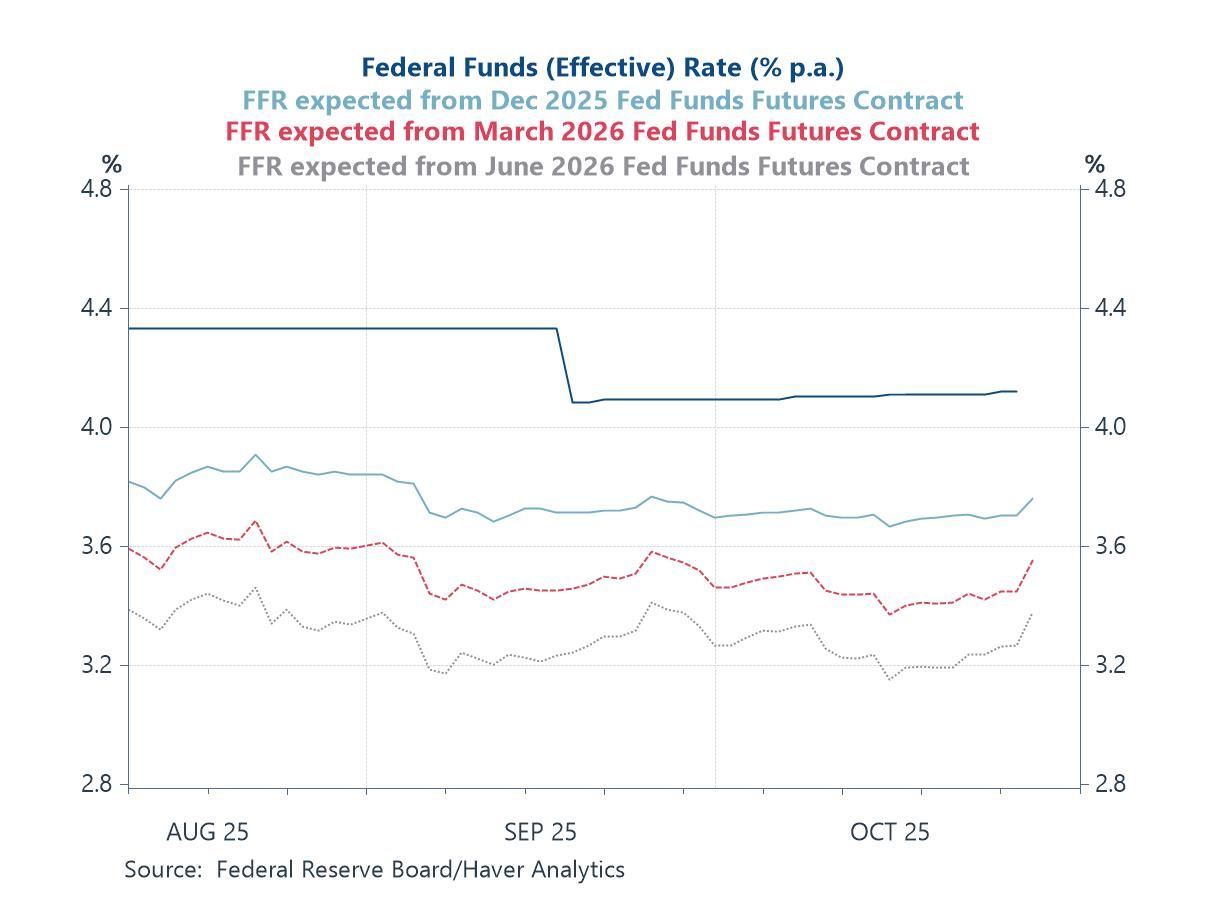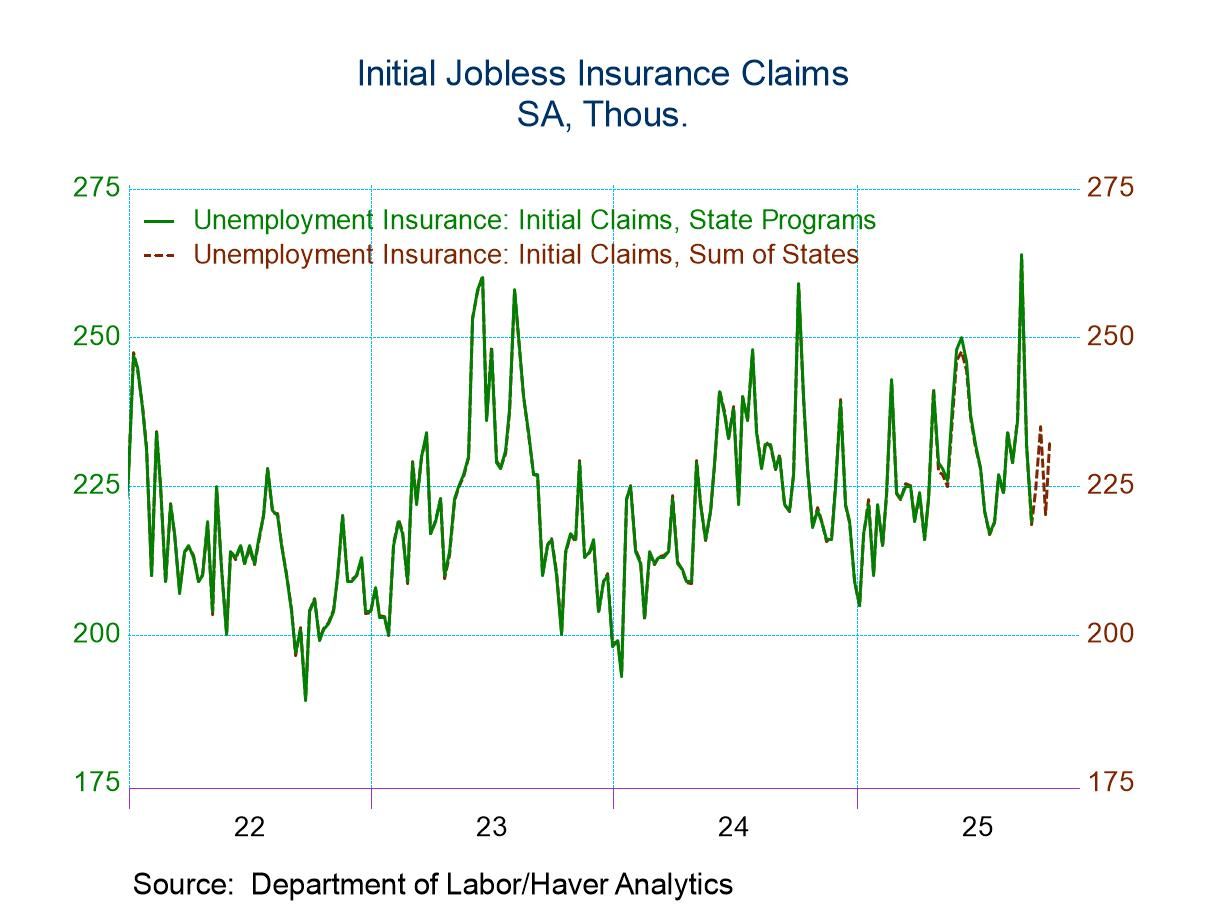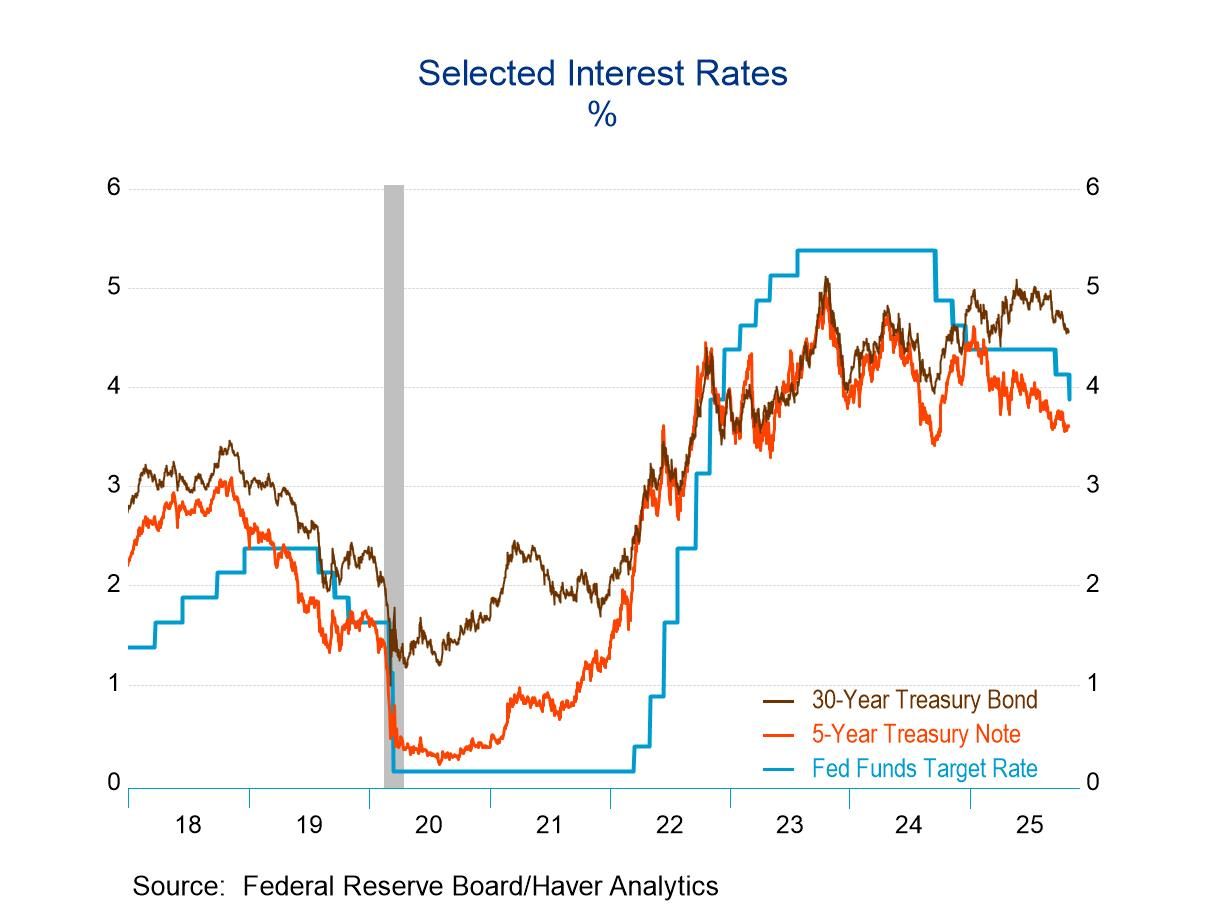 Global| Jan 11 2016
Global| Jan 11 2016U.S. Wholesale Inventories and Sales Decline
by:Tom Moeller
|in:Economy in Brief
Summary
Inventories at the wholesale level fell 0.3% during November, the same as in October. The decline reflected a 0.9% fall in durable goods due to a 3.0% drop in metal & minerals (excl. petroleum -13.3% y/y). Electrical goods inventories [...]
 Inventories at the wholesale level fell 0.3% during November, the same as in
October. The decline reflected a 0.9% fall in durable goods due to a 3.0% drop
in metal & minerals (excl. petroleum -13.3% y/y). Electrical goods
inventories rose 0.1% (+3.6% y/y) and motor vehicle inventories improved 0.4%
(12.5% y/y). Nondurable goods inventories declined 0.5% (+3.5% y/y) as farm
products dropped 7.1% (-10.6% y/y) and apparel inventories fell 1.0% (+12.6%
y/y). Petroleum inventories increased 2.3% but remained down 9.1% y/y with lower
prices. Chemical inventories were roughly unchanged (+4.7% y/y).
Inventories at the wholesale level fell 0.3% during November, the same as in
October. The decline reflected a 0.9% fall in durable goods due to a 3.0% drop
in metal & minerals (excl. petroleum -13.3% y/y). Electrical goods
inventories rose 0.1% (+3.6% y/y) and motor vehicle inventories improved 0.4%
(12.5% y/y). Nondurable goods inventories declined 0.5% (+3.5% y/y) as farm
products dropped 7.1% (-10.6% y/y) and apparel inventories fell 1.0% (+12.6%
y/y). Petroleum inventories increased 2.3% but remained down 9.1% y/y with lower
prices. Chemical inventories were roughly unchanged (+4.7% y/y).
Sales in the wholesale sector fell 1.0% (-2.0% y/y) following a 0.2% shortfall. Nondurable goods sales declined 2.4% (-5.1% y/y) as petroleum sales were off 7.4% (-36.8% y/y). Apparel sales fell 1.8% (+6.8% y/y) but grocery product sales improved 0.4% (1.0% y/y). In the durable goods sector, sales gained 0.4% (1.5% y/y). Furniture purchases rose 1.9% (10.9% y/y) and machinery equipment sales increased 0.6% (2.3% y/y). Electrical goods sales rose 0.3% (5.5% y/y).
The inventory-to-sales ratio ticked higher to 1.32, up sharply from 1.14 averaged in 2010 and 2011. The motor vehicle ratio increased to 1.78, the expansion's high. The ratio for furniture & home furnishings offset this rise with a sharp decline to 1.57, but has moved erratically sideways during the economic expansion. The nondurable goods ratio rose to 1.00, the highest level since 2001.
The wholesale trade figures are available in Haver's USECON database.
| Wholesale Sector - NAICS Classification (%) | Nov | Oct | Sep | Y/Y | 2014 | 2013 | 2012 |
|---|---|---|---|---|---|---|---|
| Inventories | -0.3 | -0.3 | 0.2 | 2.1 | 6.7 | 4.1 | 6.6 |
| Sales | -1.0 | -0.2 | 0.5 | -2.0 | 4.3 | 3.0 | 6.2 |
| I/S Ratio | 1.32 | 1.31 | 1.31 | 1.23 (Nov. '14) | 1.20 | 1.18 | 1.16 |
Tom Moeller
AuthorMore in Author Profile »Prior to joining Haver Analytics in 2000, Mr. Moeller worked as the Economist at Chancellor Capital Management from 1985 to 1999. There, he developed comprehensive economic forecasts and interpreted economic data for equity and fixed income portfolio managers. Also at Chancellor, Mr. Moeller worked as an equity analyst and was responsible for researching and rating companies in the economically sensitive automobile and housing industries for investment in Chancellor’s equity portfolio. Prior to joining Chancellor, Mr. Moeller was an Economist at Citibank from 1979 to 1984. He also analyzed pricing behavior in the metals industry for the Council on Wage and Price Stability in Washington, D.C. In 1999, Mr. Moeller received the award for most accurate forecast from the Forecasters' Club of New York. From 1990 to 1992 he was President of the New York Association for Business Economists. Mr. Moeller earned an M.B.A. in Finance from Fordham University, where he graduated in 1987. He holds a Bachelor of Arts in Economics from George Washington University.








